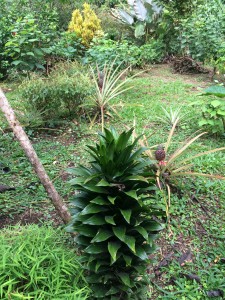Growing and harvesting pineapples is a back breaking, and painstaking process. Pineapples take 18 to 24 months to fully grow. Pineapples grow low to the ground; the part that people eat actually grows in the ground. This requires the workers to constantly be bent over to plant seeds, weed, and harvest pineapples. These processes also include heavy amounts of agrochemicals; the use of these chemicals is not only used in the open fields, but also in the confined space of the pack house.
There are several phases that go into the production of pineapples: Land Preparation, Planting, Maintenance, Harvesting, and Packaging.
- Land Preparation: The first step in pineapple production is preparing the land for planting pineapples. Workers are required to treat the soil, which involves the use of fertilizers, herbicides, and insecticides. Then, they prepare beds, clean and weed, and burn off and kill excess plants; this requires herbicides. The last step in the land preparation is to apply chemicals designed to kill off any parasites that may already be found inside the soil, also known as, nematicides.
- Planting: The planting process involves a selection of appropriate plants to use in the fields. After the plants have been selected they are then treated with insecticides and planted in the ground.
- Maintenance: Workers go into the fields to spray herbicides for weed control. The soil needs to be fertilized to optimize good growing conditions for the pineapple. Disease control is ensured with the use of insecticide and fungicide. Also, to prevent early maturation the pineapples have growth hormone regulators applied to them.
- Harvest: Before the pineapples are actually harvesting they have a ripening agent applied to them. This ensures that the consumers will have ripe pineapples available to them at their local retailer. Workers then cut and collect the pineapple and transport it to the pack house.
- Packaging: The pack house has numerous steps to finalize the pineapple production before they are shipped and sold to consumers. One of the early steps is washing the pineapples in pools with chlorine. Later on, the pineapples are moved down the assembly to be fumigated with fungicides. After, they are then polished, go through a final selection, and, finally, are weighed and boxed to be shipped.


